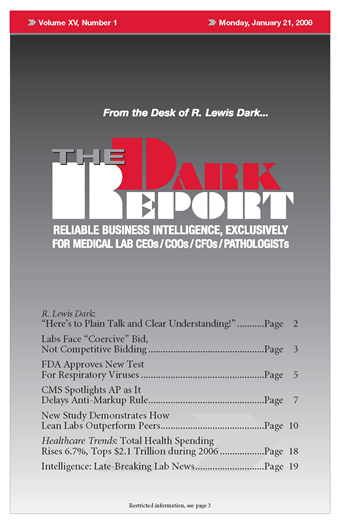CEO SUMMARY: A new study provides powerful evidence that laboratories using Lean, Six Sigma, and similar process improvement methods consistently outperform conventionally managed laboratories. Using data sets from 100 laboratories, including 14 Lean/Six Sigma laboratories, consultant Thomas P. Joseph, of Management Insight, LLC, demonstrated that Lean labs have dramatically improved turnaround times and consistently produce …
New Study Demonstrates How Lean Labs Outperform Peers Read More »
To access this post, you must purchase The Dark Report.


